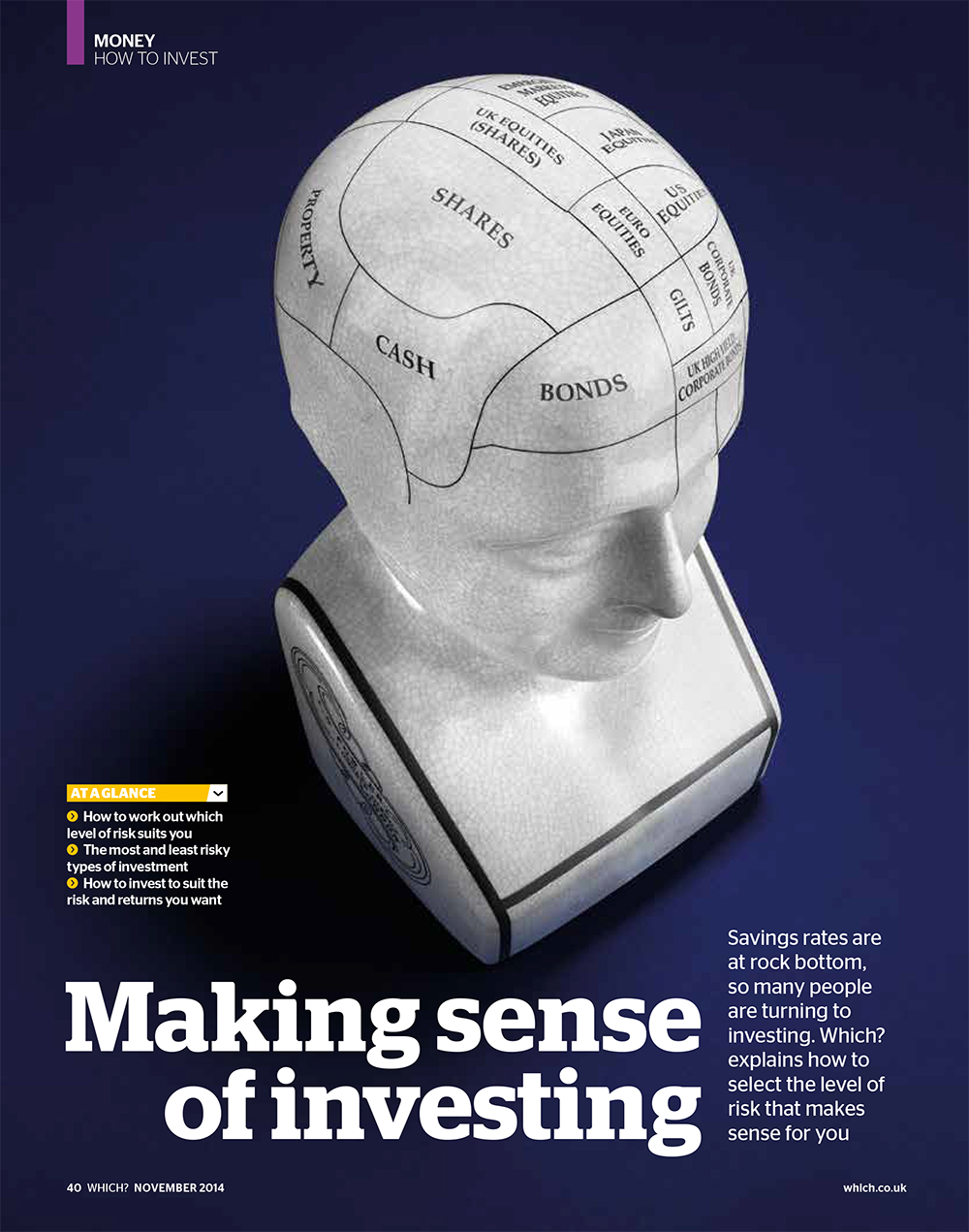
This weekend, I read an interesting article in Which magazine, November 2014 issue, titled “Making Sense of Investing”. As most people do, I originally subscribed to Which when my boiler broke down and I needed to source a replacement. Being no expert when it comes to this kind of thing I thought Which was the obvious place to get some initial help.
In recent years many consumers have turned to alternative investments to try to achieve greater returns, as savings rates have been so low. No doubt, many have turned to Which and other publications that may help. In the article, Which tried to address this issue by putting together example investment portfolios for DIY investors, or to be used as part of an informed conversation with a financial adviser. It appeared that each portfolio had a different blend of investments, depending on the level of risk an individual felt comfortable with.
I found myself nodding in agreement with a number of key points, but I also had some concerns from a professional point of view:
- “A well-designed portfolio should be a considered collection (of assets), not a list of different investments bought at different times for different reasons”
- “A good way to think about it [investment risk], is whether you could afford the worse-case scenario”
- “A relatively fuss-free option is to invest in a combination of low-cost tracker funds that aim to give you the average returns of the market. More expensive ‘actively managed’ funds can be worth consideration, but often disappoint compared with trackers”.
It made me smile to think that Quadrant’s investment process is based on six evidence-based actions that we believe will deliver investment success and covers the points raised above and many more along the way. This has taken specialists in Quadrant a number of years to refine and our investment committee meets quarterly, reviewing all aspects, to ensure that clients achieve the best possible outcome. Although this article will help someone create a portfolio, how will they manage and review this on an ongoing basis? Consumers may be better off reading the book ‘Smarter Investor ‘ by Tim Hale – in fact check out the blog that he posted on Quadrant’s website last week.
We are advocates of diversification, or “not putting all your eggs in one basket”. In our recent article, “When markets go cold, diversification is your only defence”, Andrew Pereira touched on the importance of a well-designed portfolio and the fully diversified asset mix of our AsutePortfolios™, which have been built on research, evidence and modern investment theory.
I was amazed that DIY investors will never fully understand the risks involved in their investments and how a down-turn in the market could affect their lives. There are two areas of risk that people need to take into account. The first is ‘emotional tolerance’ to risk and how you feel when things go wrong. The second is ‘capacity for loss’. You may feel like you can take more risk than you actually have capacity for! ‘Lifetime cash-flow modelling’ should be a vital part of one’s financial planning process. We use this tool to see into your future, removing guesswork and allowing you to make informed decisions. Very few Financial Advisers use this tool and Quadrant have been doing so for years. It will also identify how much risk you can tolerate and afford to take.
If the investment markets work well, the scope for investors to beat them is dramatically reduced. Why use more expensive, active fund managers that don’t add any value? Evidence shows that using ‘Tracker’ or ‘Passive’ investments is far more cost effective. These will return as near as the markets deliver, with the least amount of risk to you.
Although many people may invest using DIY platforms, I believe they are really missing out based on the above. Also, the mere fact that myself and my colleagues work with clients to ensure funds are invested in the most suitable, tax efficient ‘wrapper’: for example Pension, ISA, Investment Bonds and so on, can make a significant positive impact over the years. Using the wrong wrapper can have a serious negative impact on your returns and overall financial success.
Based on all the above, although some people enjoy doing it themselves (DIY Investing), as you will know if you have ever had a Plumber or Boiler Repair Specialist as I have, using a professional will ultimately save you time, money and achieve a better result. So, for those who are just starting out along the investment journey, you may find the article in Which a useful reference point.
For those who would welcome personal advice to help with important investment decisions, The Quadrant Group Wealth Partnership Proposition is designed to deliver you a clear vision of the financial road ahead. Take a look at quadrantgroup.co.uk.
—
This article does not constitute financial advice. Individuals must not rely on this information to make a financial or investment decision. Before making any decision, we recommend you consult your financial planner to take into account your particular investment objectives, financial situation and individual needs. Past performance is not a guide to future performance. The value of an investment and the income from it may go down as well as up and investors may not get back the amount originally invested. This document may include forward-looking statements that are based upon our current opinions, expectations and projections.






